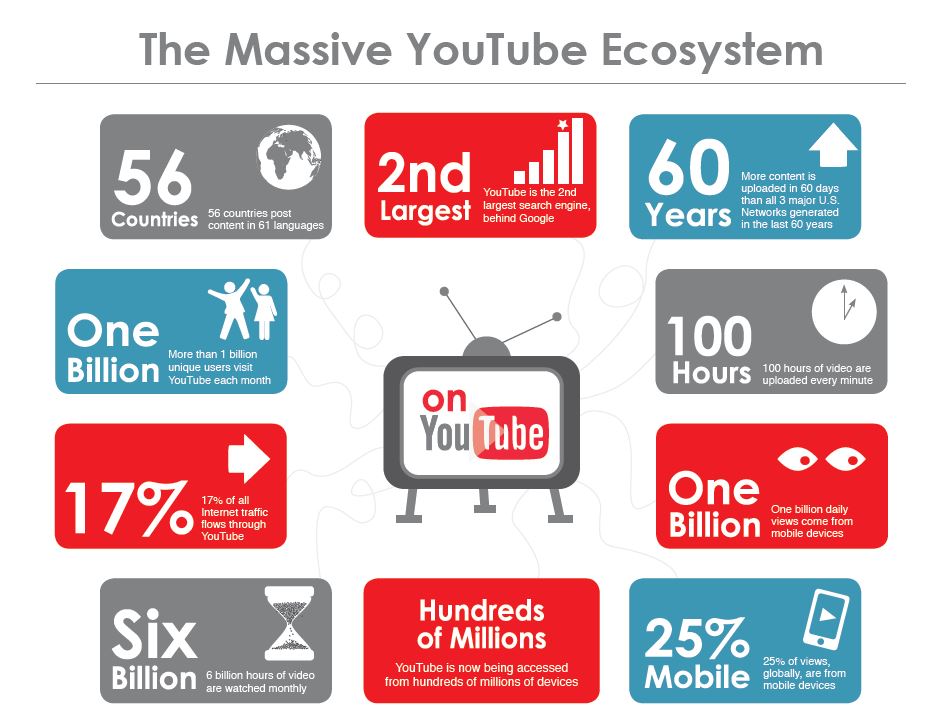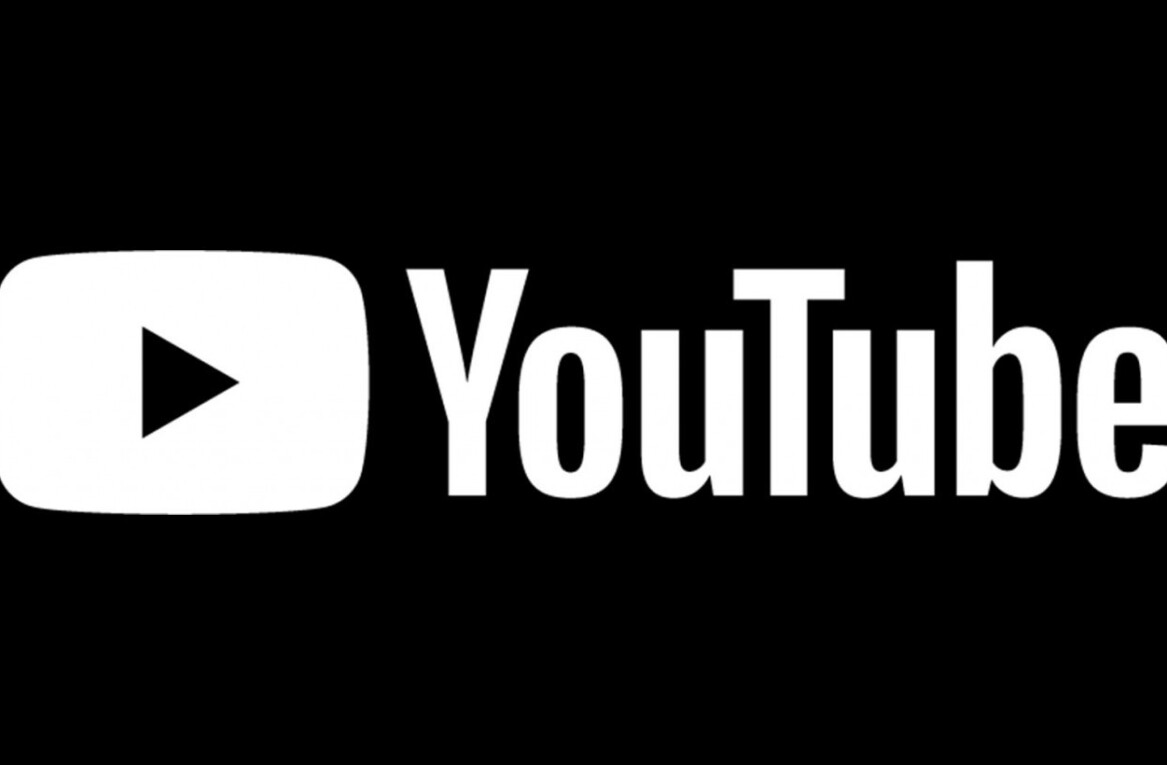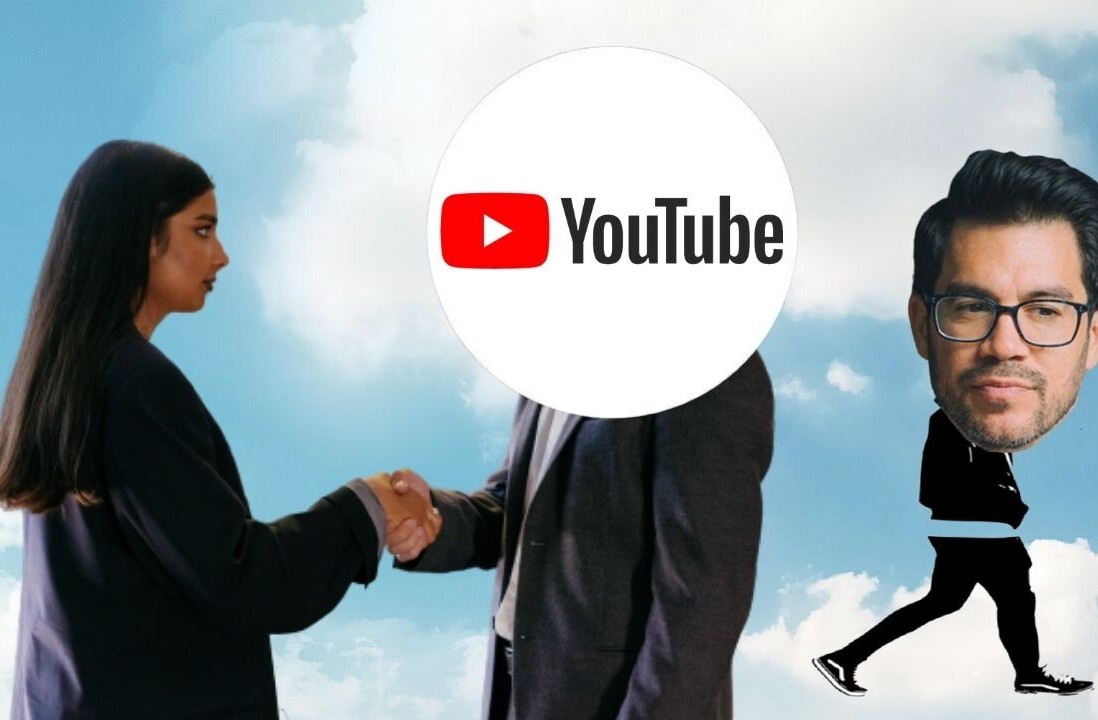
Video content has quickly evolved into the single most popular way to absorb information and entertainment online. Every day, Facebook users watch 100 million hours and YouTube users watch 1 billion hours worth of video clips.

Because of video’s meteoric rise among consumers worldwide, nearly all social networks now give video special prominence in their algorithms. Similarly, marketers are heeding the call to become video content champions – not only because of its popularity with global audiences, but because newer video creation solutions are now making production easier than ever.
The combination of consumer fervor and intuitive tools means that marketers are flocking to YouTube with their latest visual creations. But to make an impact with your videos, you need to know how they are performing, so that you can continually improve your efforts. And that means you need to identify and track the metrics that will serve as your key performance indicators (KPIs).
KPIs help you determine if you’re reaching your goals, what type of content your audience prefers, who’s watching your content, how they’re finding you, if your videos are driving the actions you aim to produce, where your strategy has gone awry, and everything else you need to know for maintaining and growing a successful presence on YouTube.
If you want to ensure your video strategy bears fruit and yields results, here are five must-track YouTube metrics.
1. Videos that receive the most engagement
Optimizing engagement rates should be a top priority for any marketer. When it comes to YouTube, engagement is measured in the form of subscribers, likes, dislikes, comments, and shares.
Engagement is a prime directive of YouTube’s algorithm, as this indicates if people find your content interesting and worth interacting with.
If you can establish the type of content formats, styles, topics, and delivery rates engender engagement, you can replicate that formula to produce more content that appears higher in internal search results and gets suggested to users post-roll.
If you want to be really savvy, do some competitive research here so you’re not leaving the exploration process to trail and error. For example, using Socialbakers’ free monthly benchmark reports, you can select which platform you would like to analyze (in this case, YouTube), the country you are targeting, and your selected industry or niche to reveal the top performers.
In the screenshot below, we can see the dominant YouTube channels for the “software” vertical, in the United States:

It is important to note that the categories here are rather broad, so you will need to establish which brands most closely align with your own. For example, if you’re in the small business sector, you would do well to ignore the gaming brands and pay closer attention to companies like QuickBooks. Clicking through to their channel, you can see that they’re drawing great engagement on their empowering “Ways to Grow” series, which consistently draws their most views.

To establish the views-to-engagement ratio for your own content through the Creator Studio, click on “Overview” in the Analytics tab. Then, add the subscribes, likes, dislikes, comments, and shares together, and calculate the ratio of engagements to views. If math isn’t exactly your strong suite, you can use spreadsheet with formulas for assistance.
Doing this for individual videos will help you establish a pattern that reflects which of your videos generate the most engagement.
2. Channel and video average view durations
Video watch times are one of the most crucial metrics for your brand to monitor. These data points are analyzed by YouTube’s algorithms to determine how well your videos are capturing your audience’s attention.
The only way for you to improve this metric, however, is to know where you currently stand. To establish your watch time via the Creator Studio, select Analytics > Watch Time Reports > Watch Time.

Here, you’ll be presented with a graph depicting your channel’s trend in watch time. If the line is going down, you should try to identify which videos are turning your audience away.
Furthermore, if you manage multiple YouTube channels for various clients in different verticals, it might be wise to set up a dashboard powered by a third-party platform like Cyfe, which supports a litany of pre-built social media reporting widgets.
Here, you can easily monitor and collect YouTube data points like average view percentages and view volume for various channels. Each channel can even be set up as its own dashboard that is embedded in your client-facing reporting system or shared with a managed group of user profiles.

This type of high-level oversight gives freelancers and agency stakeholders the wisdom needed to increase views, video watch times and subscribers.
3. Subscribers-to-views ratio
Above attracting more subscribers, your channel’s primary focus should be on creating content that resonates with its audience. If no one is watching your videos, it doesn’t matter how many subscribers you have.
Your subscribers-to-views ratio is a great indicator of how much value you are providing to your most loyal viewers over time – and how adept you are at attracting audience members that like your evolving body of work.
This metric, however, does more than point to your audience’s satisfaction rate; it also gives your channel an algorithmic edge. Videos that generate views from more subscribers within a few days of posting tend to perform the best over time.
To determine your subscribers-to-views ratio, filter your dashboard to only show results for the last 28 days. From there, compare the number of views to your total subscribers and calculate the percentage.
To deepen your competitive research, compare you data with others in your niche. For instance, if you sell entrepreneurship courses, you might want to consider Tai Lopez’s YouTube channel to be a worthy benchmark, in which case you’d do well to reference his user statistics on Socialblade.

With this data in hand, you’ve got a good starting point for finding effective content strategies to experiment with. Why did Lopez receive such a significant spike in subscribers last January? What videos did he post that garnered disproportionately high view volume?
Unearthing the answers to questions like these can help a channel owner devise a more effective strategy for upping their views among subscribers.
4. YouTube suggestion referrals
Having your videos appear in the suggestion column alongside a video with tons of views can lead to a massive explosion in views, engagement and subscribers for your channel.
For this reason, it is vital to monitor and track which of your videos are most often suggested to YouTube viewers – and which videos by others are sending you the best audience.
To find these insights, go to Analytics > Traffic Sources > Suggested Videos.

This information can help you determine common themes to replicate these successes. Is a specific video from someone else sending you significantly more traffic than any other? Create a few new clips with related keywords and styles.
5. YouTube search referrals
When you are just starting out with your YouTube channel and have no audience who can provide algorithm-boosting indicators, you’re basically left to rely on search traffic.
While this may seem disheartening, remember that YouTube is the second-largest search engine online, meaning your video is bound to generate traffic through this portal if it’s truly optimized and engaging.
To find and track the keyword searches that are sending the most YouTube users your way over time, go to Analytics > Traffic Sources > YouTube Search.

Here you can see the impact that each top keyword has on your viewership, in any given time period, and relative to each other. If you can get your video to perform well for certain search terms, YouTube may rank your channel and content highly for those phrases.
Recognizing the prominence of YouTube search means that you’ll want to optimize your channel to be found and monitor the results of your efforts. Every bit of content you include in your profile matters, so take your time and be well-researched and uber-authentic.
Next steps for YouTube domination
Understanding the exact tactics that garner longer video views, higher engagements, and attention from the demographic you’re after is the key to YouTube stardom.
There are many successful businesses that have been bolstered by well-executed YouTube strategies. Investing in the time it takes to study these metrics and their patterns can help inform your content strategy, so you can draw in more views, comments, likes, shares, and subscribers.
Get the TNW newsletter
Get the most important tech news in your inbox each week.




